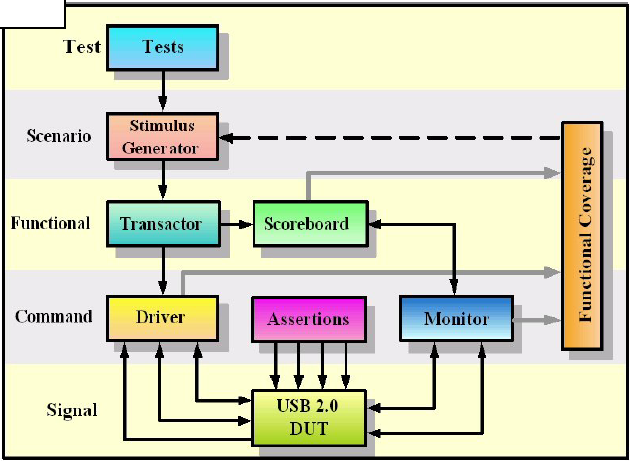
Lexical Conventions
Since e language was developed based on other programming languages, Most of the syntax is more or less same as other programming language. So if you know lexical conventions of C++ or C, then you can follow e language without any problem.
File Structures
e files should have .e as extension.
Example
- memory.e
- hello.e
When the code size is big, it is better to have code organized into multiple files. This is same as any programming language.When importing other file in C++ or C language we use #include, in e language we use import filename, below example shows how it is done.
1 <'
2
3 import hello_world.e;
4 import memory;
5
6 // Rest of the code
7
8
9 '>
As you see, first file has .e extension and second file does not. Well in e language, we don't need to specify the extension of e file, the compiler assumes .e as extension.
Within file, we can have code segments. Beginning of code segment is marked with <' and end of code segment is marked with '> . And code that does not fall within this code segments are treated as comments
1 // Anything here is comment
2 <'
3 //Code here
4
5
6
7 '>
8
9 //This is also comment
10
11 <'
12 //Code continue
13
14 '>
White Spaces and Comments
| White spaces are same as in any programming languages, you can refer to Verilog tutorial section if you need to know more on this. |
As of comments, in e language, we can comment code in three ways
- // : This is same as in Verilog and C language
- -- : This is same as in VHDL language
- : This is block comment, any text that falls outside is treated as comment.
· 1 <'
· 2 -- Single line comment
· 3 // This is also single line comment
· 4
· 5 //Code here
· 6
· 7 '>
· 8 Multipe line comment
· 9 So ignored
· 10
· 11 <'
· 12 //Code continue..
· 13
· 14 '>
Literals and Constants
- Literals are numeric, character and string values. Following literals and constants are in e language. Unsized Numbers: As name implies, they are unsized, can be both positive and negative
- Hexadecimal numbers start with 0x
- Binary numbers start with 0b
- Octal number start with 0o
- Example : 32, 44, 0x20, 0b101010101, 0o11_11, 0xDEAD_BEEF, -1, -0x44
- Kilo or Muliple of 1024 : 1K, 10K
- Mega or 1024*1024 : 1M, 10M
- Sized Numbers:
- Hexadecimal numbers start with 'h
- Binary numbers start with 'b
- Decimal numbers start with 'd
- Octal number start with 'o
- If the value number is more than the specified size in bits, its most significant bits are ignored.
- If the value number is less that the specified size, it is padded by zeros.
- Example : 16'd32, 32'd44, 8'h20, 8'b0101_0101, 12'o1111, 32'hDEAD_BEEF, -4'h1
- Predefined Constants: There are few list of pre defined constants a below.
- TRUE For Boolean variables and expressions.
- FALSE For Boolean variables and expressions.
- NULL For structs, specifies a NULL pointer.
- NULL For structs, specifies a NULL pointer.
- MAX_INT Represents the largest 32-bit int (2^31 -1)
- MAX_INT Represents the largest 32-bit int (2^31 -1)
- MAX_UINT Represents the largest 32-bit uint (2^32 -1).
- Literal String:A literal string is a sequence of zero or more ASCII characters enclosed by double quotes (" ").
- Example : "This is sample string"
- Example : "" -Empty string
- Escape sequence in e is same as in any other programming lanuage \n, \t, \\ etc
- Literal Character: We really don't care about this type
· 1
· 2 <'
· 3 // Example of numeric values
· 4 struct abc {
· 5 data : int ;
· 6
· 7 my_method () is {
· 8 // Unsigned numbers
· 9 data = 0x1; // Hexadecimal
· 10 data = 33; // Decimal
· 11 data = 0b11111_00000;//Binary
· 12 data = 0o777_333; // Octal
· 13 // Signed numbers
· 14 data = 32'hDEAD_BEAF; // 32 bit Hexadecimal
· 15 data = 8'd33; // 8 bit decimal
· 16 data = 9'b1111_0000; // 8 bit binary
· 17 data = 18'o777_333; // 18 bit Octal
· 18 // Kilo and Mega
· 19 data = 1K; // 1024
· 20 data = 5M; // 1024*1024*5
· 21 };
· 22
· 23 };
· 24 '>
Bạn Có Đam Mê Với Vi Mạch hay Nhúng - Bạn Muốn Trau Dồi Thêm Kĩ Năng
Mong Muốn Có Thêm Cơ Hội Trong Công Việc
Và Trở Thành Một Người Có Giá Trị Hơn
Mong Muốn Có Thêm Cơ Hội Trong Công Việc
Và Trở Thành Một Người Có Giá Trị Hơn
















